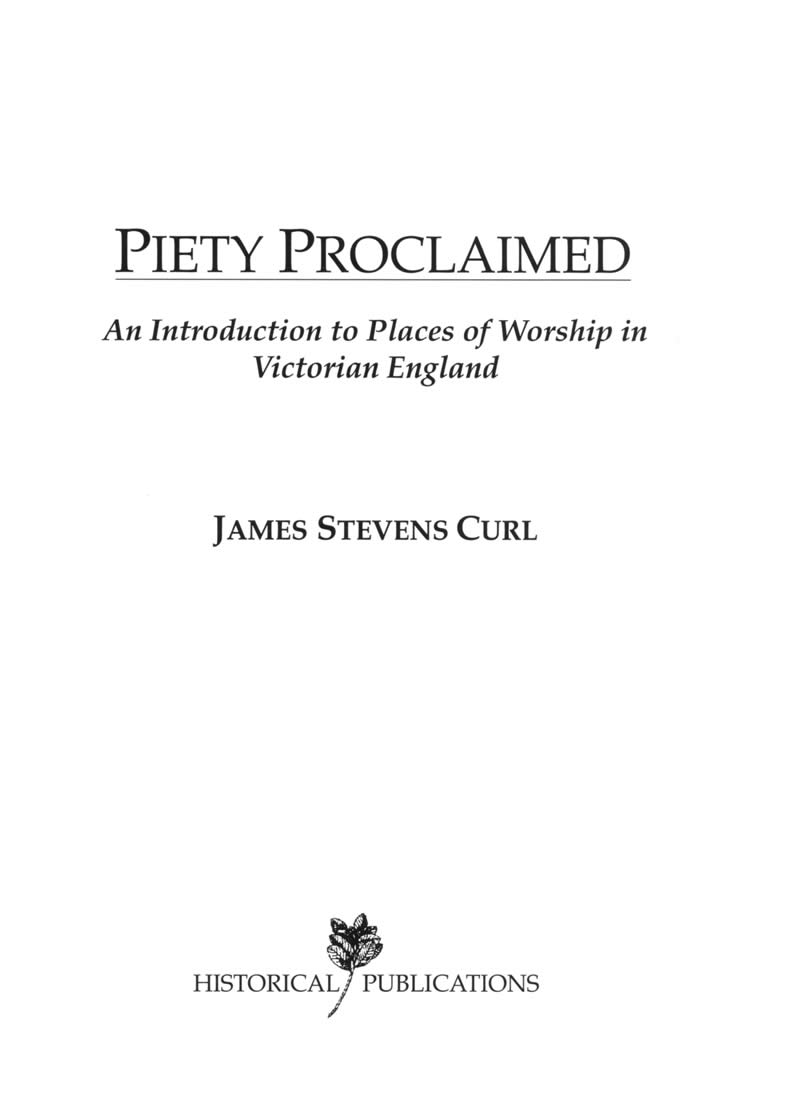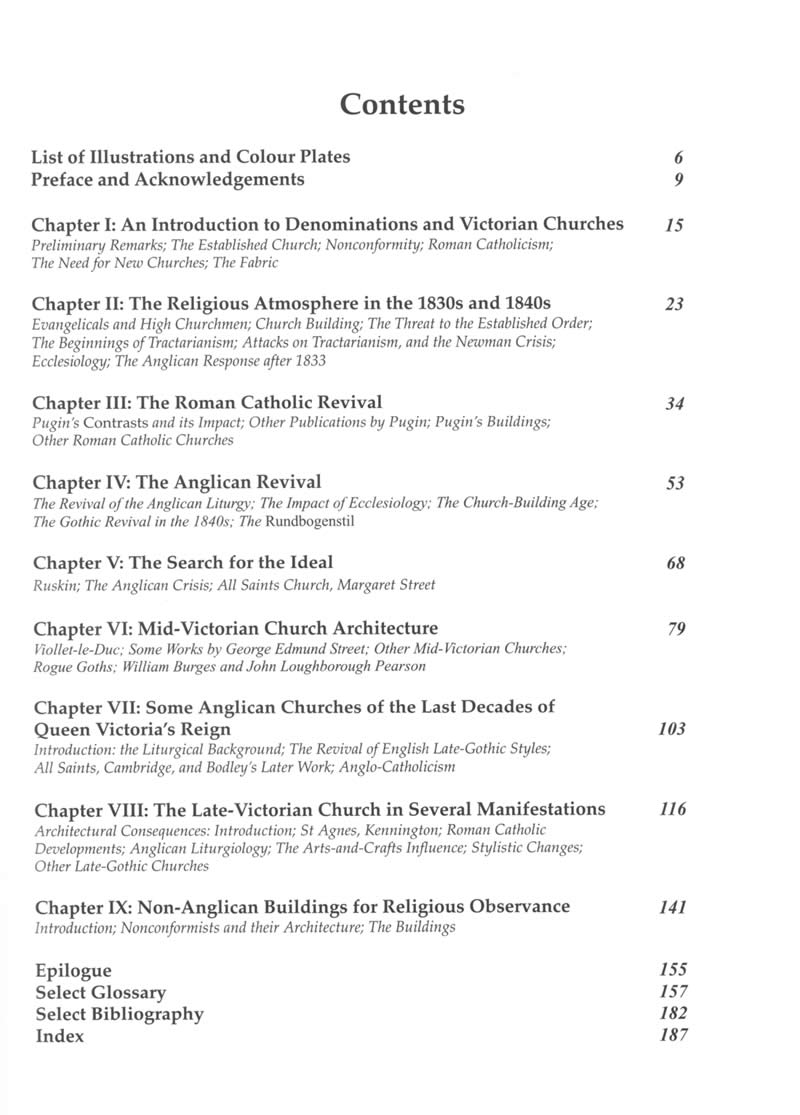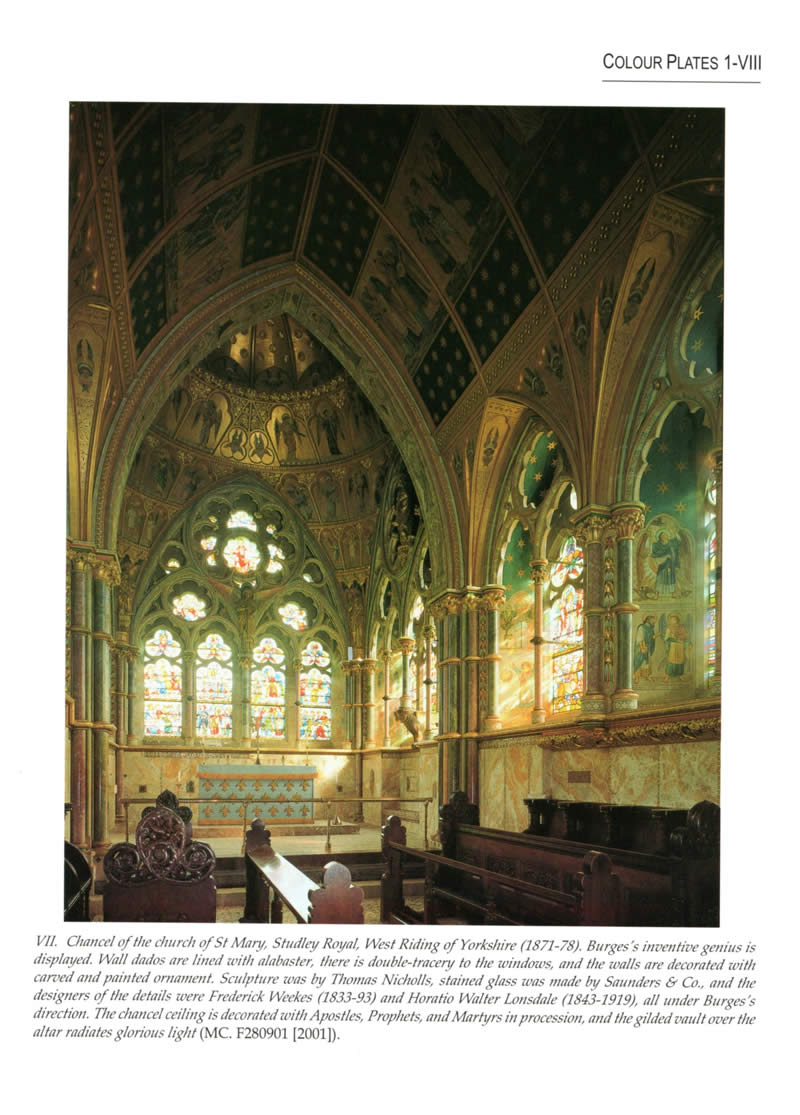Piety Proclaimed: An Introduction to Places of Worship in Victorian England

Author : James Stevens Curl
Publisher : London: Historical Publications Ltd., 2002
ISBN:0-948667-77-X (hbk)
Religious buildings erected during the reign of Queen Victoria are not only numerous, but offer a wide range of architectural styles, fine furnishings, and much else besides. They were expressions of the importance of religion in that period, and their existence and qualities were often related to the aspirations of clergy, laity, and individual benefactors. The finest exemplars were, even more, the result of a passionate commitment to an architecture based on scholarly studies known as Ecclesiology. The text places ecclesiastical architecture in its complex settings, and highlights the religious atmosphere, arguments, and controversies of the time. The progress of the Gothic Revival is charted, differences in the architecture of various denominations are explained, and the influence of the chief protagonists involved is outlined. The book, a revised edition of The English Heritage Book of Victorian Churches (1995), contains a wide range of photographs old and new (some specially commissioned), as well as an extensive glossary and a bibliography.
An earlier version of Piety Proclaimed was:
English Heritage Book of Victorian Churches (London: B.T. Batsford Ltd. & English Heritage, 1995, ISBN: 0-7134-7490-4 [hbk.], & 0-7134-7491-2 [pbk.]).
Reviews
'Professor Curl is not just a chronicler of the period… He is fiercely critical of Pevsner’s bias against architects of the late Gothic Revival. He deplores historical determinism and the “vast accretion of prejudice and misunderstanding”… Curl thunders from his pulpit in the tradition of the great Victorian preachers. He castigates modern critics for their… ignorance of ritual. He chastises the clergy for their lack of aesthetic awareness. But we hear him catch his breath when entranced by Bodley’s Holy Angels, Hoar Cross, and feel his pain at the “almost unbearably beautiful” St Mary, Studley Royal, by Burges. With its plentiful illustrations and its patient explanations of the liturgical context, this is the most comprehensive introduction to Victorian churches in print.'
'Here is an enjoyable and useful book... Curl’s knowledge could properly be called encyclopaedic, and his book is extremely good value for its price. The narrative is... efficient and concise; in particular, the introduction to the political history of the dissenting groups and their relationship with architecture is usefully put. The selection of churches discussed is truly representative: a real achievement given such an embarrassment of riches.'
'This book is, let it be said at once, a most useful addition to the literature on the churches of the Victorian age, well researched, generously illustrated, with an excellent bibliography, a glossary that is much more than an alphabetical list of architectural terms..., and a reliable index... Professor Curl’s Preface is a must. In wonderfully spirited fashion he lists the various problems when considering Victorian churches, the ‘distortion of truth’ by some architectural writers (and it is not difficult to know whom he means), our secular society, and the behaviour over the last forty years or so of the various denominations themselves... It is not the least remarkable aspect of Piety Proclaimed that it deals with so many themes ... The illustrations show how rich and varied is English Victorian ecclesiastical architecture, and Curl writes about it with enthusiasm... The churches of the late Victorian period are shown to be not so much a descent from High Victorian originality into mere medieval imitation... as a summation of, the architectural expression of, decades of religious, theological, and liturgiological scholarship.'
'When Curl wrote this, perhaps his most important book to date, no one had approached English Gothic Revival churches of the 19th century with the two essential qualifications for such a study. One was a personal delight in how these churches were meant to function ritually. The other was the detached aesthetic judgement required to see that most of George Gilbert Scott senior’s churches, and those by A W Pugin, were mediocre in their interior spatial effects and exterior profiles; the best-known names were not the best designers … Curl can empathise with Tractarian, Roman Catholic, and Nonconformist aspirations, reserving his rare flashes of malice for Evangelicals and Nikolaus Pevsner. With a confident, though never superior, scholarship, Curl traces the complex political and spiritual tensions of the century. Then, with Martin Charles’ seductive colour plates of interiors all caught in a golden haze, and with monochrome illustrations of virtually every church discussed at any length, the text takes an exhilarating ride through the three main stages of the Revival. These are first, Pugin and Scott’s mistaken historicism; then the muscular Gothic of architects such as Butterfield, Burges, Teulon, and Lamb; and lastly the architects working in an historicist, but developing Gothic: J L Pearson, Bodley, Garner, Giles Gilbert Scott, Sedding, and Comper. These last are Curl’s heroes. What is so admirable is Curl’s masterly jettisoning of pedantic apparatus, … the modern excuse for loose, pretentious writing. All his wide learning is expressed precisely within the flow of his text, as it should be and could be in any integrated scholarly argument.'
'A useful and necessary book… Curl synthesises recent work in this field, competently summarises a crowded period, and gives it… combative application for the general reader. He also provides a valuable service in toppling sacred cows of historical interpretation by treating the late-Gothic Revival with as much seriousness as the mid-Victorian and recognises its value as the flowering and culmination of the rebirth. Curl takes Sir Giles Gilbert Scott’s Liverpool Cathedral (1906-80) as seriously as Butterfield’s All Saints, Margaret Street, St Marylebone (1849-59). A restoration of balance has long been needed and this is strengthened by magnificent colour plates by Martin Charles and well-chosen illustrations that show churches in their original integrity.'
'This really is a very good introduction to Victorian places of worship, just as the title claims… Curl writes well and has an easy-to-understand style. Long complicated words are avoided and the book is divided into manageable sections so you can just as easily read it in bed as on the train. Apart from describing the main architectural developments during the nineteenth century, the text also deals with the religious questions that underlay the liturgical changes. Especially clear and concise is an account of Anglo-Catholicism that appears towards the end of the book. This is something all students of the Victorian period should read and learn! The book has been nicely produced…and is extremely well illustrated with many black and white images and a small colour section… If you want to know what it was that caused the churches to be built the way they were, this is very much the book for you.'




 LinkedIn
LinkedIn  Wikipedia
Wikipedia